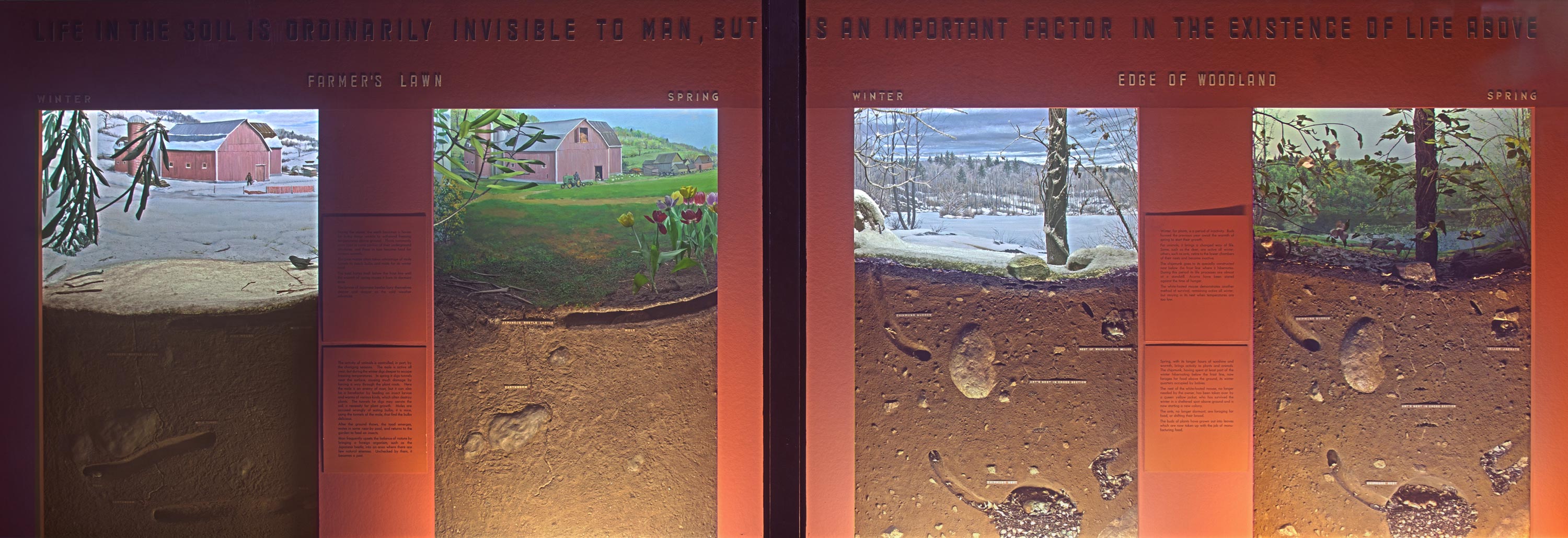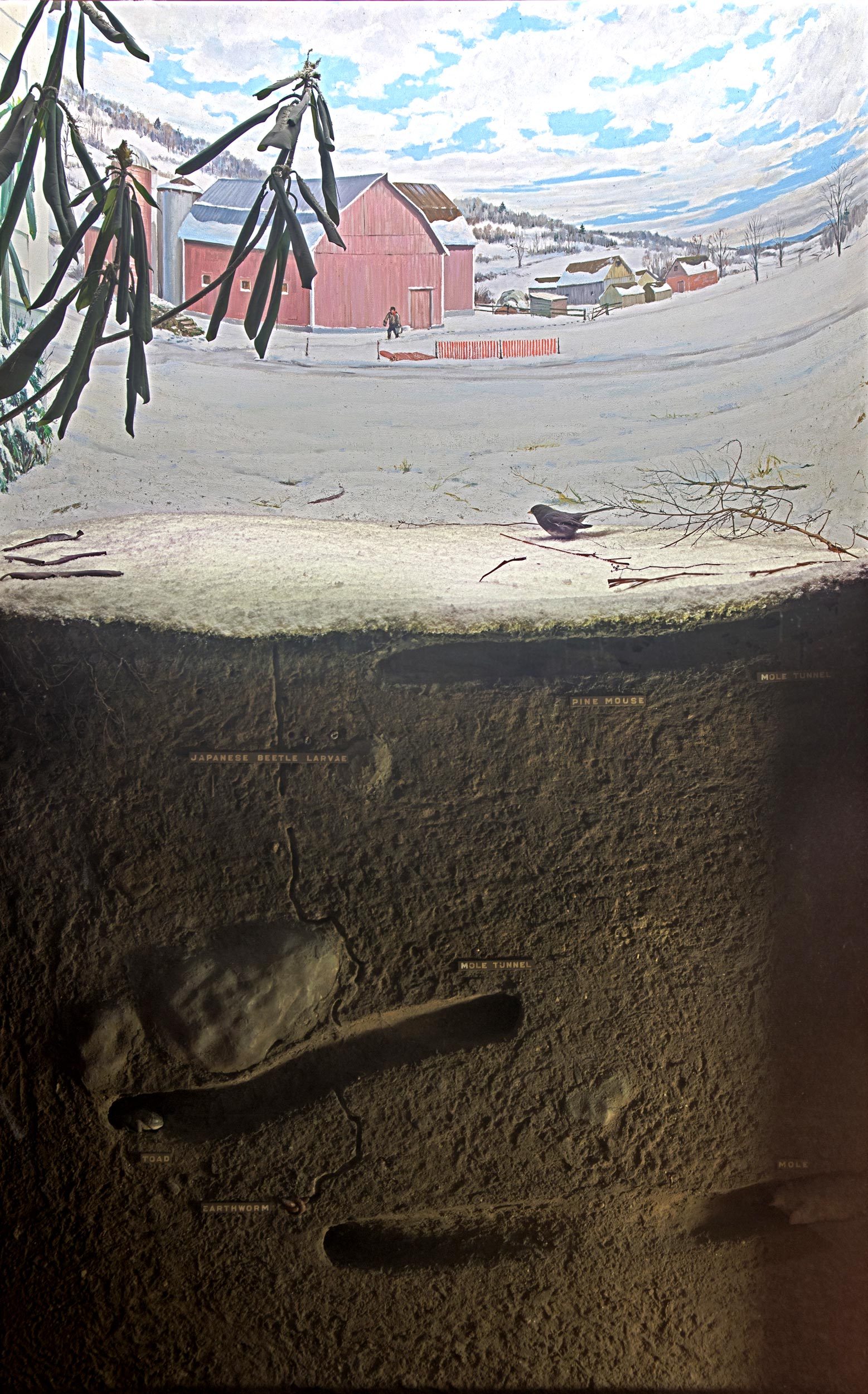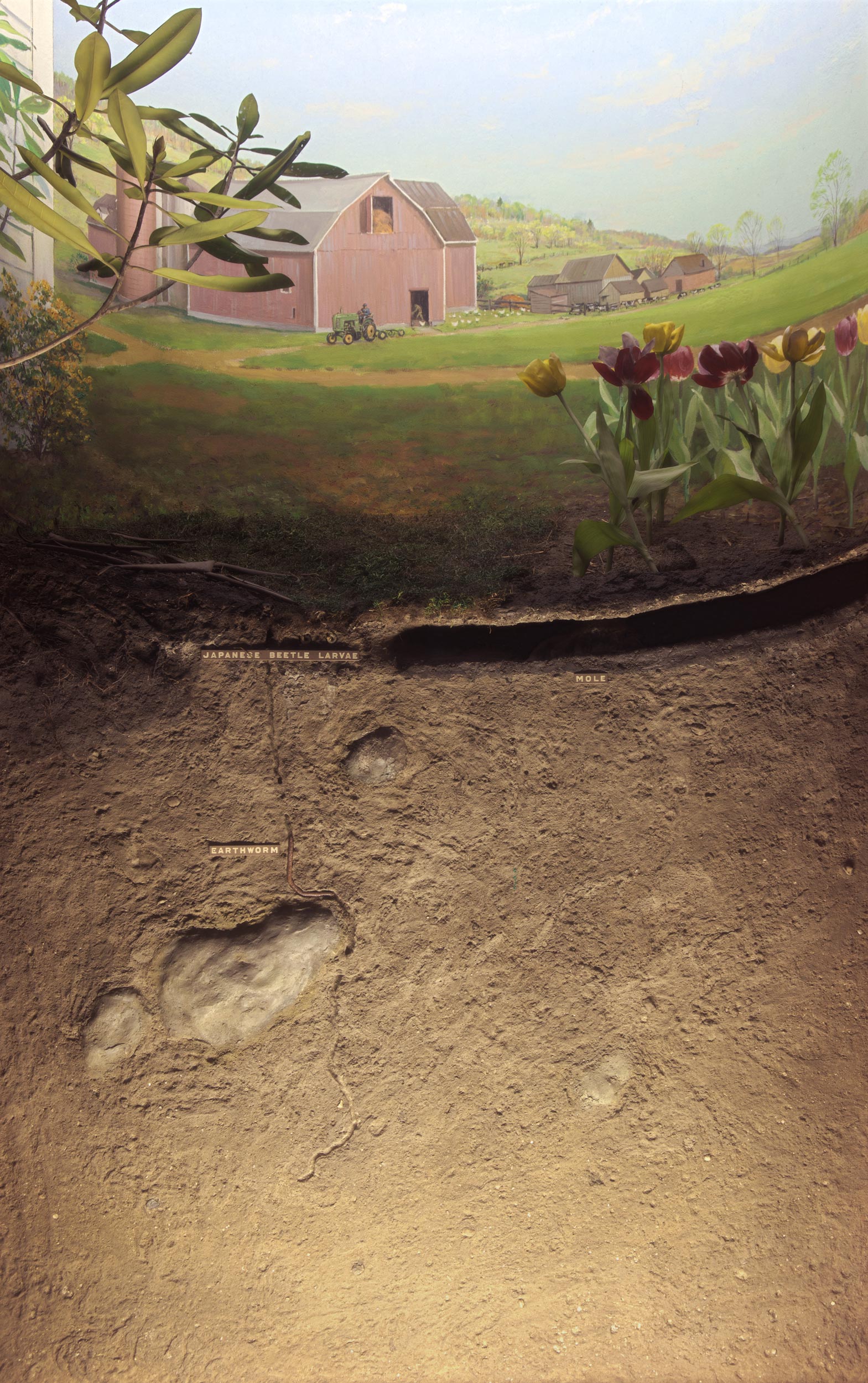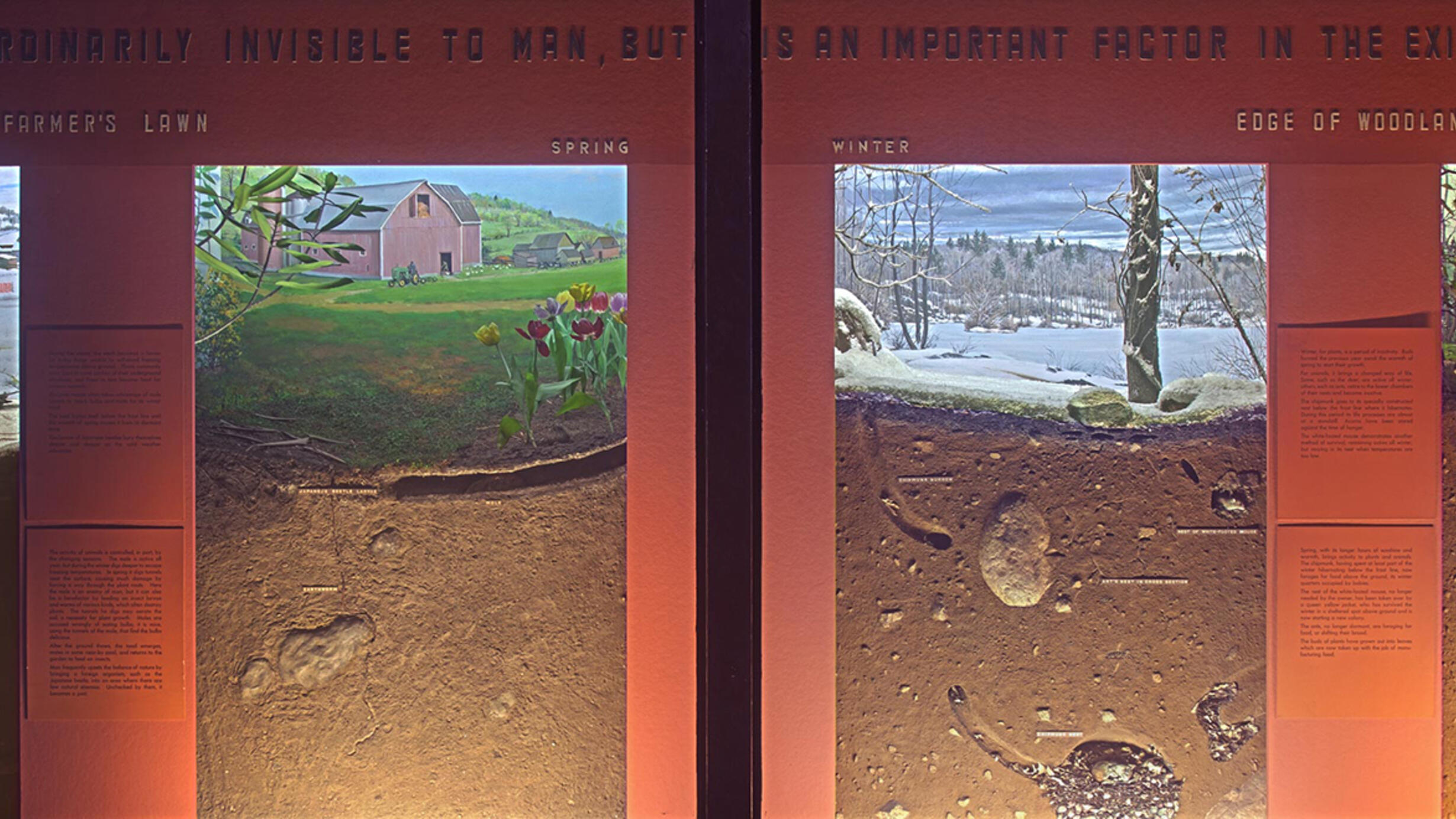Edge of Woodland. Winter
Chipmunk Burrow
Ant's Nest in Cross Section
Nest of White-footed Mouse
Chipmunk Nest
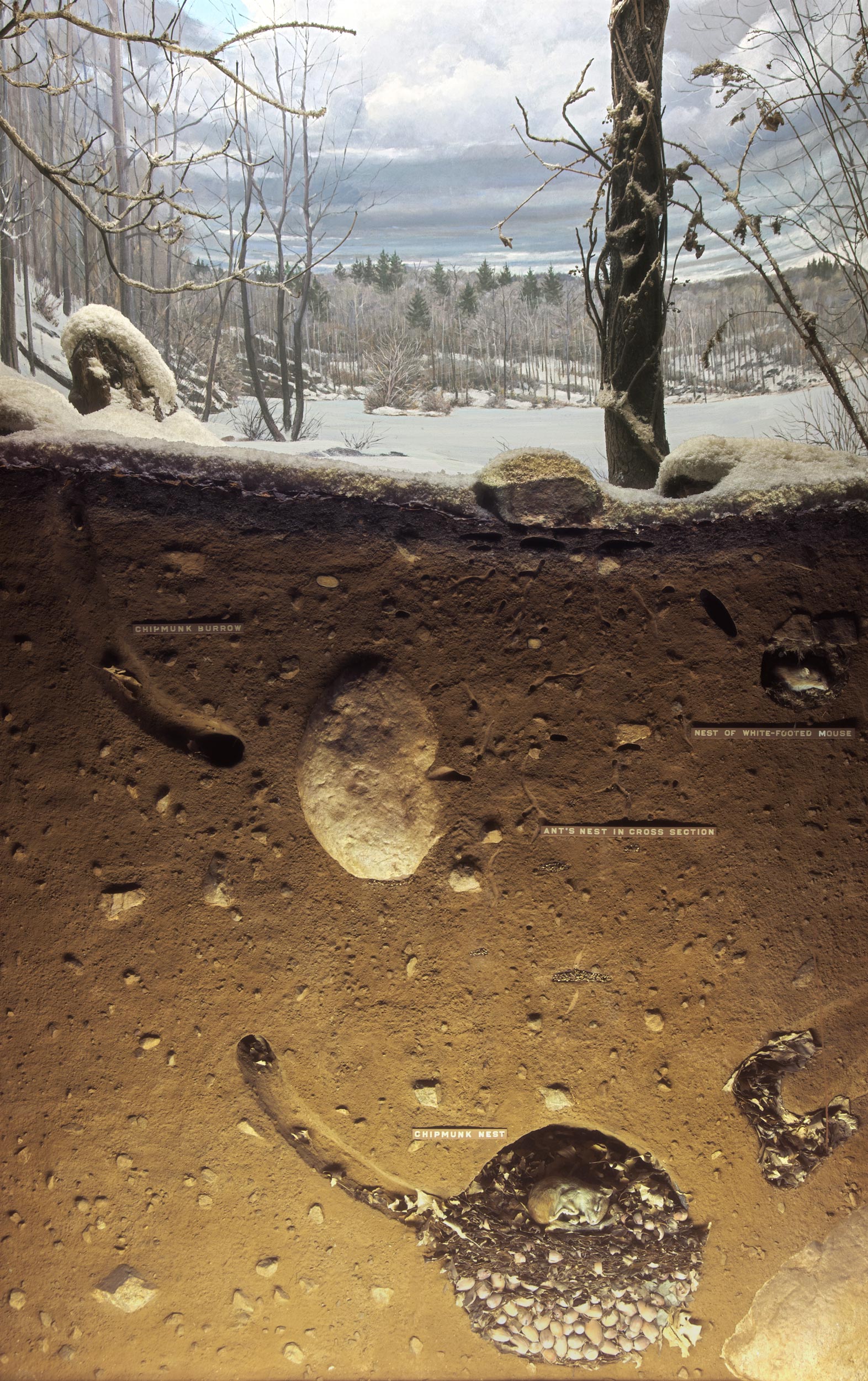
Edge of the Woodland. Spring
White-Footed Mouse Chipmunk Nest
Chipmunk Burrow
Yellow Jackets
Ants' Nest in Cross Section
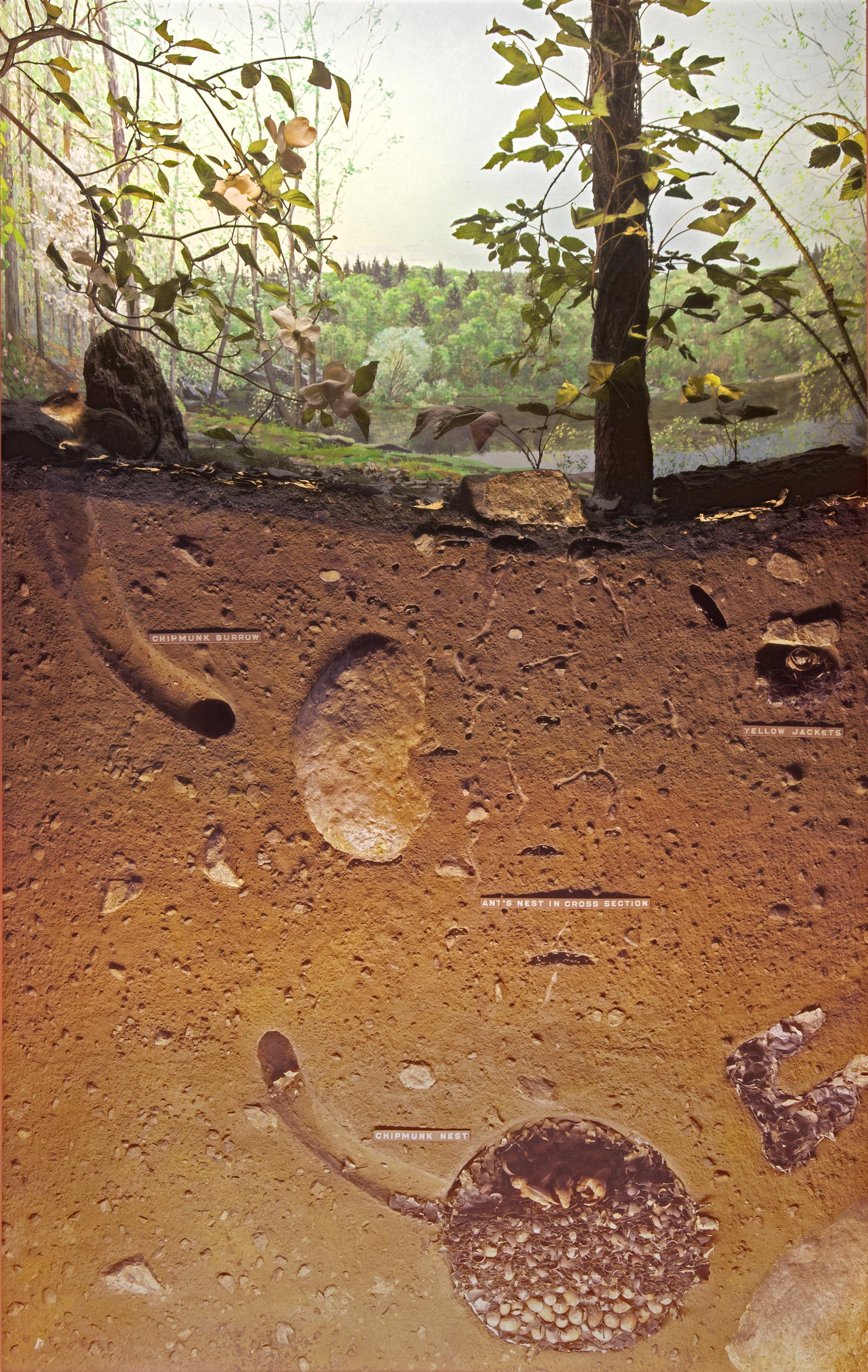
Edge of the Woodland. Spring. Text
The activity of animals is controlled, in part, by the changing seasons. The mole is active all year, but during the winter digs deeper to escape freezing temperatures. In spring it digs tunnels near the surface, causing much damage by forcing a way through the plant roots. Here the mole is an enemy of man, but it can also be a benefactor by feeding on insect larvae and worms of various kinds, which often destroy plants. The tunnels he digs may aerate the soil, a necessity for plant growth. Moles are accused wrongly of eating bulbs; it is mice, using the tunnels of the mole, that find the bulbs delicious.
After the ground thaws, the toad emerges, mates in some nearby pool, and returns to the garden to feed on insects.
Man frequently upsets the balance of nature by bringing a foreign organism, such as the Japanese beetle, into an area where there are few natural enemies. Unchecked by them, it becomes a pest.
Japanese Beetle Larvae
Mole
Earthworm
Edge of Woodland: Winter. text
Winter, for plants, is a period of inactivity. Buds formed the previous year await the warmth of spring to start their growth.
For animals, it brings a changed way of life. Some, such as the deer, are active all winter; others, such as ants, retire to the lower chambers of their nests and become inactive.
The chipmunk goes to its specially constructed nest below the frost line where it hibernates. During this period its life processes are almost at a standstill. Acorns have been stored against the time of hunger.
The white-footed mouse demonstrates another method of survival, remaining active all winter, but staying in its nest when temperatures are too low.
Farmer's lawn: Winter text
During the winter, the earth becomes a haven for living things unable to withstand freezing temperatures above ground. Plants commonly store food in some portion of their underground structures, and these in turn become food for various animals.
The pine mouse often takes advantage of mole tunnels to reach bulbs and roots for its winter food.
The toad buries itself below the frost line until the warmth of spring rouses it from its dormant state.
The larvae of Japanese beetles bury themselves deeper and deeper as the cold weather advances.
Farmer's Lawn: Spring
The activity of animals is controlled, in part, by the changing seasons. The mole is active all year, but during the winter digs deeper to escape freezing temperatures. In spring it digs tunnels near the surface, causing much damage by forcing a way through the plant roots. Here the mole is an enemy of man, but it can also be a benefactor by feeding on insect larvae and worms of various kinds, which often destroy plants. The tunnels he digs may aerate the soil, a necessity for plant growth. Moles are accused wrongly of eating bulbs; it is mice, using the tunnels of the mole, that find the bulbs delicious.
After the ground thaws, the toad emerges, mates in some near-by pool, and returns to the garden to feed on insects.
Man frequently upsets the balance of nature by bringing a foreign organism, such as the Japanese beetle, into an area where there are few natural enemies. Unchecked by them, it becomes a pest.
Life in The Soil
Part of Hall of New York State Environment.
